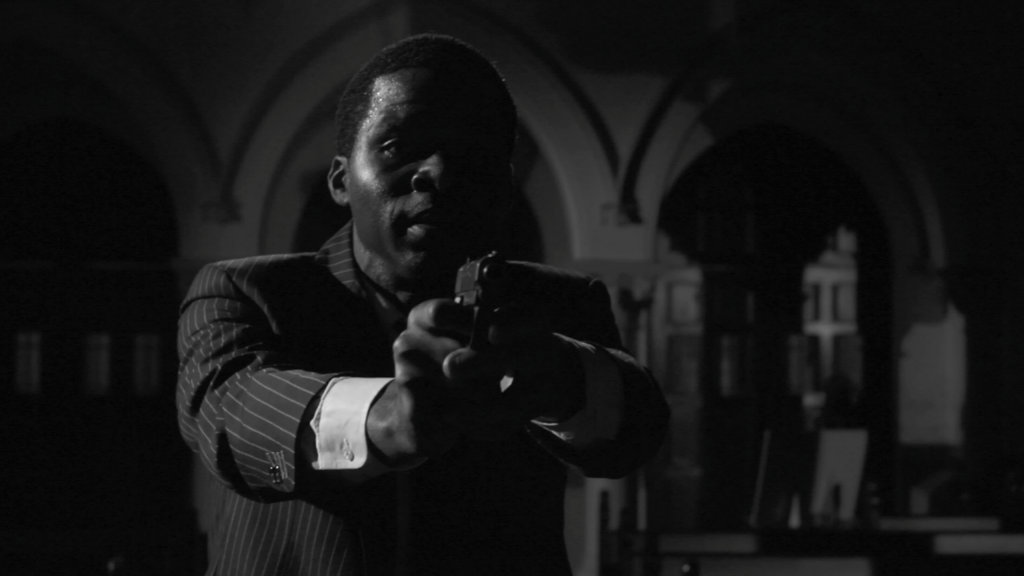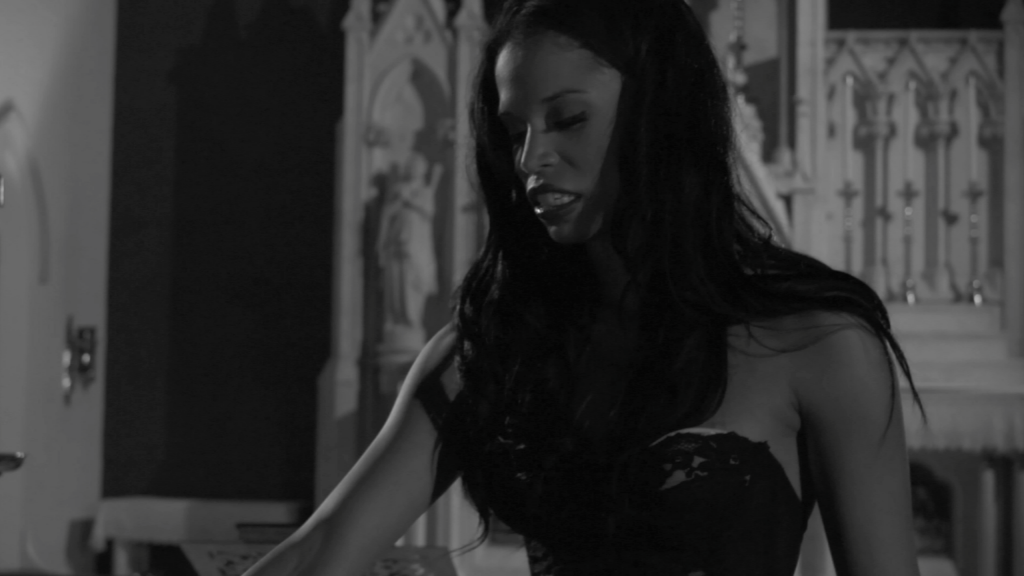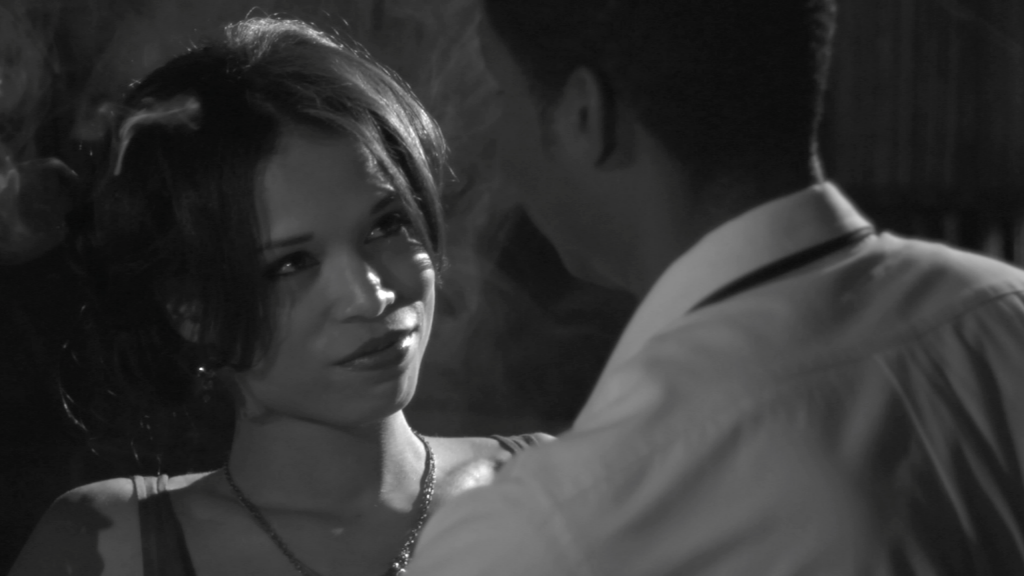Neo-noir short ‘Stiletto’ proves style adds substance
Introducing the brand spanking new “Chicago Film Scene” section of Movie Muse! In my nearly three years writing, I’ve realized that there’s plenty of good filmmaking happening in this fair city in which I reside despite what they say about New York and L.A., and I’ve launched this section to help give hard-working filmmakers and production companies a chance to get some web exposure.
The following is a review of a short courtesy Hesperidian Productions, a recently born and booming production company in the city currently specializing in film and fashion. “Stiletto” debuted in Chicago back in March and its fast making Hesperidian a name to remember.
If you are a Chicago filmmaker and you would like me to write about your film, shoot me an email at moviemusereviews@gmail.com
—
Not just anyone can make a noir these days. Technology alone wipes away that grainy, smoky effect from the picture quality, usually reducing any neo-effort to what looks like a modern film playing black-and-white dress up.
Hesperidian Productions’ short film “Stiletto” embraces that challenge with little reservation. Filmmaker Kyle Thomas recognizes that noir is a complete tone rather than merely an aesthetic, though it certainly helps that the costumes and locations help maintain the vacuum that the genre needs in order to thrive.
The story and the style in which “Stiletto” is told also stick closely to noir. Pete Davis (Warren Feagins) is a district attorney and it appears justice — ever the noir-approved theme — has slipped through his fingers again. He’s all but given up after the only little girl who can testify to the sexual misconduct of an archbishop (Jeremy Menekseoglu) commits suicide.
True to the genre, Pete does a lot of three things: drink, smoke cigarettes and narrate the story in a tense, emotional manner. But he’s not the most interesting character in “Stiletto.” Instead it’s Selene (Kristin Anderson), a brothel owner and femme fatale of sorts with whom Pete has a complicated history.
Pete and Selene, along with Pete’s cop buddy Ralph (Gerald Baggot), concoct a plan to lure the archbishop into a sex scandal. Pete doesn’t want to involve his sometimes-lover, but he’s desperate to mete the justice the archbishop deserves.
Selene drives “Stiletto” both in terms of plot and as a central sex symbol, another way the film calibrates itself as a noir. She is a woman of great appeal and mystery, self-assured yet as it turns out, quite fragile. Anderson stacks these layers in ideal fashion and makes Selene flat-out intriguing enough to stay engaged in the film. Pete narrates this story, but it ultimately turns out to be hers. “Stiletto” will leave you longing or at least curious for either a feature film or television spin-off based on Selene based on the events leading up to or following the events of the short.
The film takes place in modern day, but everything about “Stiletto” is old school. Except for a boxy television and a wire there’s really no hint of technology, which is necessary seeing as neo-noir needs to at least create the illusion of having taken place back in the ’40s in order not to feel fake.
In a short film, there isn’t much of a chance to build context, so style is everything and “Stiletto” has plenty of it. The antique set decoration and costumes create a world both strange and familiar. This holds true even with the characters: Pete and Selene are deeper, complex people we identify with, while Ralph and the archbishop are caricatures that enhance the other-dimension feel of the film.
Thomas also drapes the film in shadow for the desired aura. Sometimes we are deprived of full facial expressions when we want them, but the lighting and the entire visual style of the film comes into its own as the short moves closer and closer to its climax, a scene that provides a more than adequate payoff.
The film isn’t entirely style over substance, but the former leaves the more lasting impression of the two as is the case with most short films. The justice theme of “Stiletto” breaks no new ground, but writers Mikal McLendon and Jane Morson’s questions and criticisms of it present themselves in a thought-provoking manner.
“Stiletto” demonstrates that Hesperidian Productions understands the value of production quality; that especially in a short film (especially, especially in a noir short film), visual quality plays a vital role in storytelling. Generally, a story like this would be too ambitious to pull off in 25 minutes, but the visual strength of “Stiletto” adds its own depth story, filling in the cracks left behind by hurried story development.
And if nothing else, finding out why it’s called “Stiletto” is worth the watch.








0 Comments
You can be the first one to leave a comment.